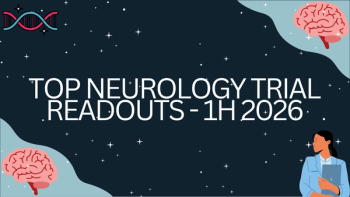
Plasma GFAP Levels Significant in Detecting Amyloid Pathology Across Alzheimer Continuum
The findings, which suggest that high plasma GFAP levels are parallel with AD and are markers of tau pathology, hold important implications in facilitating the detection of Alzheimer disease, particularly in the preclinical stage.
Recently published data using 3 thoroughly characterized cohorts showed that glial fibrillary acidic protein (GFAP) was significantly higher among individuals with preclinical Alzheimer disease (AD) and reached higher levels at symptomatic stages of AD.
Led by Andrea Benedet, PhD, postdoctoral researcher, University of Gothenburg, the study showed that the effect sizes of the increases of observed plasma GFAP levels were also found to be larger than those of cerebrospinal fluid (CSF) GFAP, indicating that plasma GFAP may be a superior biomarker for tracking amyloid-ß (Aß) than its CSF counterpart.
"Our findings have important implications in facilitating the detection of AD, particularly in its preclinical stage,” the study authors concluded. "This earlier detection may accelerate primary and secondary prevention trials and the design of the interventional studies at early stages of AD. Plasma GFAP, alone or in combination with other biomarkers, could be used to screen for Aß+ individuals at any stage across the AD continuum."
The cross-sectional study included participants from the TRIAD cohort (n = 300), which had individuals in the entire AD continuum, whose results were then confirmed in the ALFA+ Cohort (n = 384), which included individuals with preclinical AD, and the BioCogBank Paris Lariboisière cohort (n = 187). Data was collected from July 2014 to January 2020.
READ MORE:
In comparison with cognitively unimpaired (CU) Aß-negative patients, plasma GFAP levels were significantly higher among individuals with preclinical AD (TRIAD: Aß-negative mean, 185.1 pg/mL [standard deviation (SD), 93.5]; Aß-positive mean, 285.0 pg/mL [SD, 142.6]; ALFA+: Aß-negative mean, 121.9 pg/mL [SD, 42.4], Aß-positive mean, 332.5 pg/mL [SD, 78.5].
Symptomatic stages throughout the AD continuum also showed higher plasma GFAP levels (TRIAD: CU Aβ-positive mean, 285.0 pg/mL [SD, 142.6], mild cognitive impairment [MCI] Aβ-positive mean, 332.5 pg/mL [SD, 153.6]; AD mean, 388.1 pg/mL [SD, 152.8] vs CU Aβ-negative mean, 185.1 pg/mL [SD, 93.5]; Paris: MCI Aβ-positive, mean, 368.6 pg/mL [158.5]; AD dementia, mean, 376.4 pg/mL [179.6] vs CU Aβ-negative mean, 161.2 pg/mL [SD, 67.1]).
The magnitude of the plasma GFAP changes were greater than those of CSF GFAP when using CU- individuals as the reference group (CU+ individuals: 24% increase [P = .24; d = 0.56]; individuals with MCI+: 35% increase [P = .06; d = 0.82]; individuals with AD dementia: 30% increase [P = .03; d = 0.86]). Notably, patients with frontotemporal dementia demonstrated lower plasma and CSF GFAP levels than patients on the AD continuum.
An analysis of plasma and CSF GFAP levels with Aß pathology was measured with CSF Aß42/40 or Aß positron emission tomography (PET) and included only CU individuals, those with MCI, and those with AD dementia. In TRIAD, both plasma and CSF GFAP levels were negatively associated with CSF Aß42/40 (plasma GFAP: P <.001 [np2 = 0.26]; CSF GFAP: P = .01 [np2 = 0.11]) and positively associated with Aß PET (plasma GFAP: P <.001 [np2 = 0.32]; CSF GFAP: P <.001 [np2 = 0.10]). Notably, plasma GFAP effect sizes with the associations of Aß pathology, either CSF Aß42/40 or Aß PET, were larger than those of CSF GFAP levels.
When evaluating GFAP’s association with tau biomarkers, higher plasma and CSF GFAP levels observed in TRIAD were found to be associated with tau PET burden (plasma GFAP: P <.001 [np2 = 0.29]; CSF GFAP: P = .005 [np2 = .08]). An analysis of all 3 cohorts also showed that both plasma and CSF GFAP levels were significantly associated with CSF p-tau181 levels.
A mediation analysis conducted in TRIAD showed that the association of plasma GFAP levels with tau were mediated by Aß and were replicated using PET biomarkers. Notably, the significant indirect association corresponded to 60% of the total association of tau with plasma GFAP levels. These findings remained significant across the ALFA+ and Paris cohorts, with corresponding values of 62% and 63%, respectively, of the total association of CSF p-tau181 with plasma GFAP levels. Conversely, there was no significant indirect association between CSF p-tau181 and CSF GFAP levels, suggesting Aß-independent effects.
The authors noted, "a unique feature of our study is that we measured both plasma and CSF GFAP levels in the same participants. This feature allowed us to draw one of the main conclusions of this study, namely, that differences in plasma GFAP levels are larger than those of CSF GFAP levels between the groups, and the effect sizes of the associations between plasma GFAP levels and biomarkers of Aβ are greater than those of CSF GFAP levels."
REFERENCE
Benedet AL, Mila-Aloma M, Vrillon A, et al. Differences between plasma and cerebrospinal fluid glial fibrillary acidic protein levels across the Alzheimer disease continuum. JAMA Neurol. Published online October 18, 2021. doi:10.1001/jamaneurol.2021.3671
Newsletter
Keep your finger on the pulse of neurology—subscribe to NeurologyLive for expert interviews, new data, and breakthrough treatment updates.



























